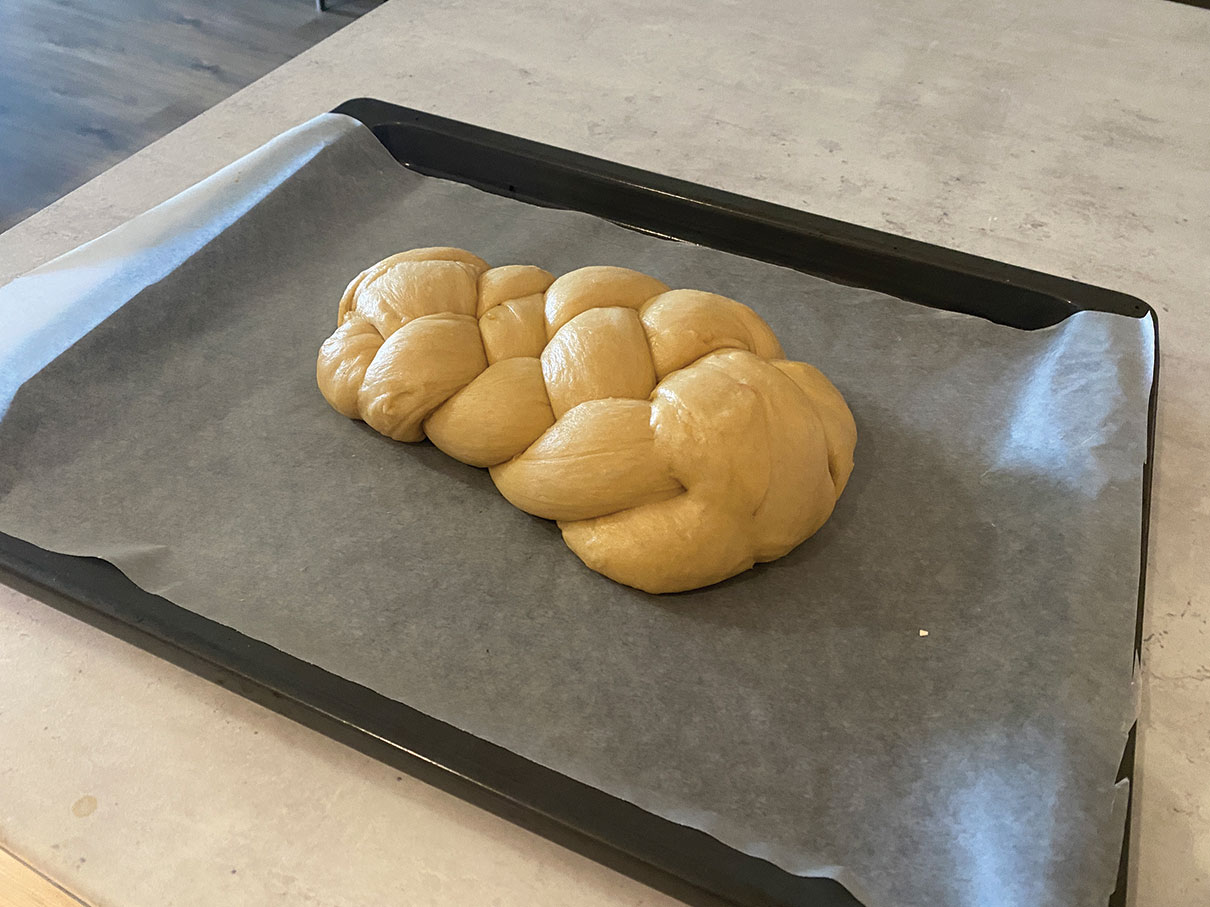By Leila Stein
“Can I get two kitke please?” is probably the most common question heard by select bakers across neighbourhoods in Cape Town on Fridays as the Jewish community prepares for Shabbat.
While those behind the counter immediately know what you’re referring to, it may come as a surprise that outside of South Africa, few people would.
Kitke, a word used by the South African Jewish community interchangeably with the Hebrew word “challah” is not South African in origin. However, it appears to have become ingrained in South African communication over time.
Like much to do with Jewish history, it is a term that has travelled the world as communities have moved and settled. What makes kitke stand out from the rest is that it has settled best in South Africa. In other countries with descendants from the same communities, the word has been largely lost along with English assimilation.
Challah, our portion for the Kohanim
To start off with, when discussing the braided bread delicacy served as part of the Jewish traditions on Shabbat and festivals, the Hebrew word “challah” is standard everywhere.
Much like our prayers are all in Hebrew as a universal language to pass on traditions, this extends to this central item to the holiday meals. Meaning “portion”, challah in the Torah refers to the portion of dough that we are commanded to give to the Kohanim.
Challah is used in South Africa interchangeably with kitke today. However, usually only among those in the Jewish community or at least among those taught to refer to it this way.
Among the wider South African community, this is not the go-to word for the sweet, braided bread. This is most notable in the fact that challah baked in a Pick n Pay or Checkers will be labelled ‘kitke’.
From Lithuania to South Africa
As many would guess, the term kitke was brought with the Litvak community who made up most of the Jewish people arriving in South Africa in the late 18th and early 19th centuries.
Kitke is among nine different words that refer to different festival loaves of bread used by the various Ashkenazi communities in Europe, according to the YIVO Institute for Jewish Research Language and Culture Atlas. Khale, berkhes, barches, bukhte, dacher, koylatch, koilitsh and shtritsl make up the other eight.
While these are sourced from the different parts of Europe with historical Jewish communities, kitke is identified explicitly as part of the common lexicon of those in Lithuania.
In some discussions, the Lithuanian word is linked to the Polish word kitka which means ‘to wear one’s hair in a braid’. Understandably this link seems logical as the kitke we know and love is braided, giving it its unique shape.
So why just us?
There is no definitive answer as to why the South African community held onto this word when other Lithuanian communities let it go when they moved to their new homes. This is especially interesting given the fact that Yiddish is rarely spoken, even by those who still say ‘kitke’.
It is also notable that the integration of the word outside of the Jewish community has given it South African status.
If you ask at a store for a challah, they may know what you’re talking about because of previous interactions, but it’s not likely to get immediate recognition. However, asking for a kitke on a Friday afternoon (although this is a little late and it’s possible they are already sold out), will get a swift response with the added question of “poppy seeds? Sesame seeds? Plain?”
This has almost formalised the word in the country, so even as younger generations default to challah as they are taught in school — the use of kitke remains firm in the broader community.
A simple kitke recipe
Much like the multiple names for variations on the different types of breads used for Jewish celebrations across communities, there are many variations on the recipe for kitke.
This is one of the simpler options and can make one bigger or two smaller kitkes depending on your preference.
Ingredients:
• ½ cup of warm water
• 1 tsp of sugar
• 1 packet of instant yeast
• ½ cup of oil (vegetable/sunflower)
• ½ cup of warm water
• ¼ cup of sugar
• 2 tsp of salt
• 2 eggs
• 4 cups of flour
• 1 egg for basting
• Poppy, sesame or sunflower seeds
Start with a bowl you’ve warmed up with water. Dissolve the teaspoon of sugar in the water and sprinkle the whole yeast packet on top. Leave for 10 minutes. After the rest, check yeast is activating (bubbling or getting foamy) before stirring to dissolve.
Mix in the oil, rest of the warm water, sugar, salt, and eggs. Mix in two cups of flour well. When those are all combined add in the remaining flour until the dough is sticky. Let the dough rest for 10 minutes. Liberally flour a board or surface and turn out the dough. Knead for 10 minutes, adding flour if it becomes too sticky.
Get a fresh bowl or clean the one you were using and lightly grease it with oil. Place your dough ball into it and cover with a cloth or plastic wrap. Place in a warm spot and let it rise for 1 to 2 hours. Once risen punch down and let it rise for another 45 minutes to an hour. For one kitke separate into strands and braid on a lightly greased baking sheet. (can be three, four or six strands depending on experience). Secure the braid by pushing the ends together and tucking them under the base. Cover with a slightly damp cloth and leave to rise for the last time.
When ready to cook, brush with beaten egg yolk and sprinkle with poppy or sunflower seeds. Bake at 200˚ C for around 30-40 minutes. Keep an eye out for a golden brown texture. If unsure the kitke is baked through, take a toothpick and poke through an exposed side. If it comes out clean, you’re ready.


• Published in the PDF edition of the June 2022 issue – Click here to read it.
• To advertise in the Cape Jewish Chronicle and on this website – contact us on 021 464 6700 ext. 104 or email advertising@ctjc.co.za. For more information and advertising rate card click here.
• Sign up for our newsletter and never miss another issue.
• Please support the Cape Jewish Chronicle with a voluntary Subscription for 2022. For payment info click here.
• Visit our Portal to the Jewish Community to see a list of all the Jewish organisations in Cape Town with links to their websites.
Follow the Chronicle: Facebook | Instagram | Twitter | LinkedIn











As to why only SA has kitke stuck? Because of the majority Lithuanian origin influence so Lithuanian yiddish the dominant yiddish.
Indeed Ireland Jewry also knows some common Lithuanian yiddish such as faribel. Maybe some there know kitke too?
But truth is this is a process of language death. The next generation may not know kite anymore. We can even see how the word brocha is falling out of use as we switch to the more global kiddush.
In the process of language death subsequent generations retain less and less of Lithuanian yiddish.
Anyway have a good shabbos and Yom tov daven well don’t get ongeshnossed and don’t forgessen the faribels pas net, eat plenty kitke and listen to bobba and zeida give them some nachas